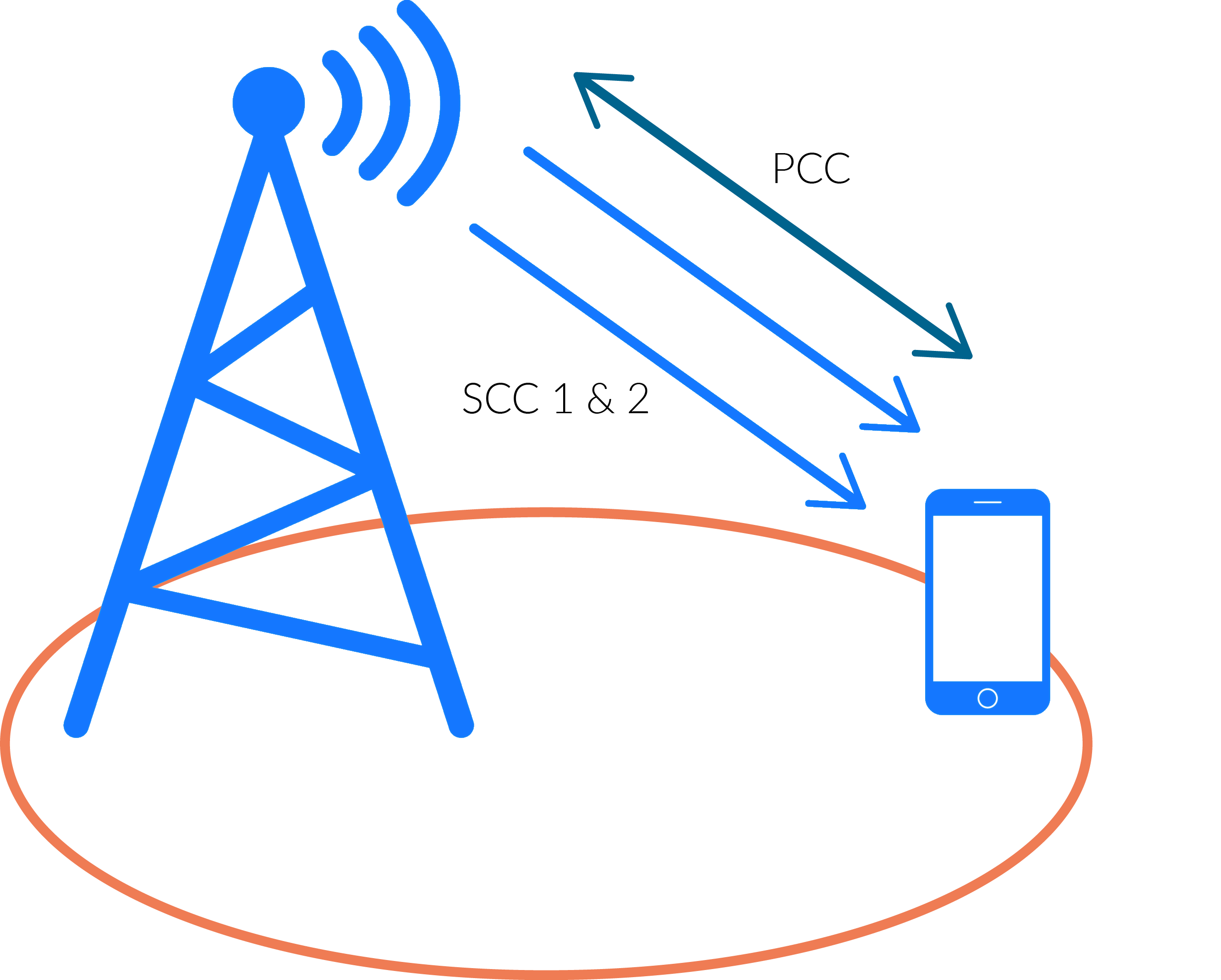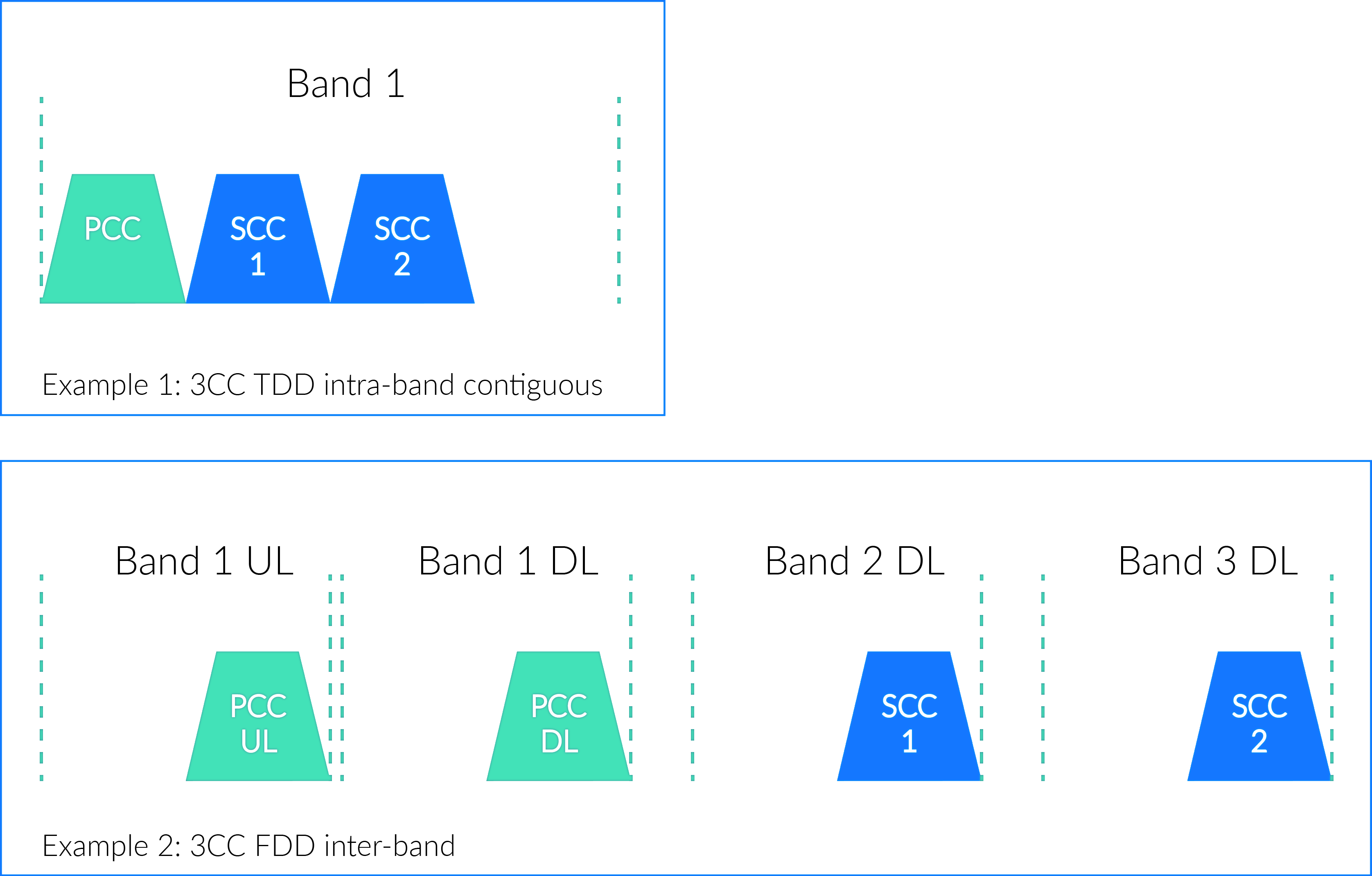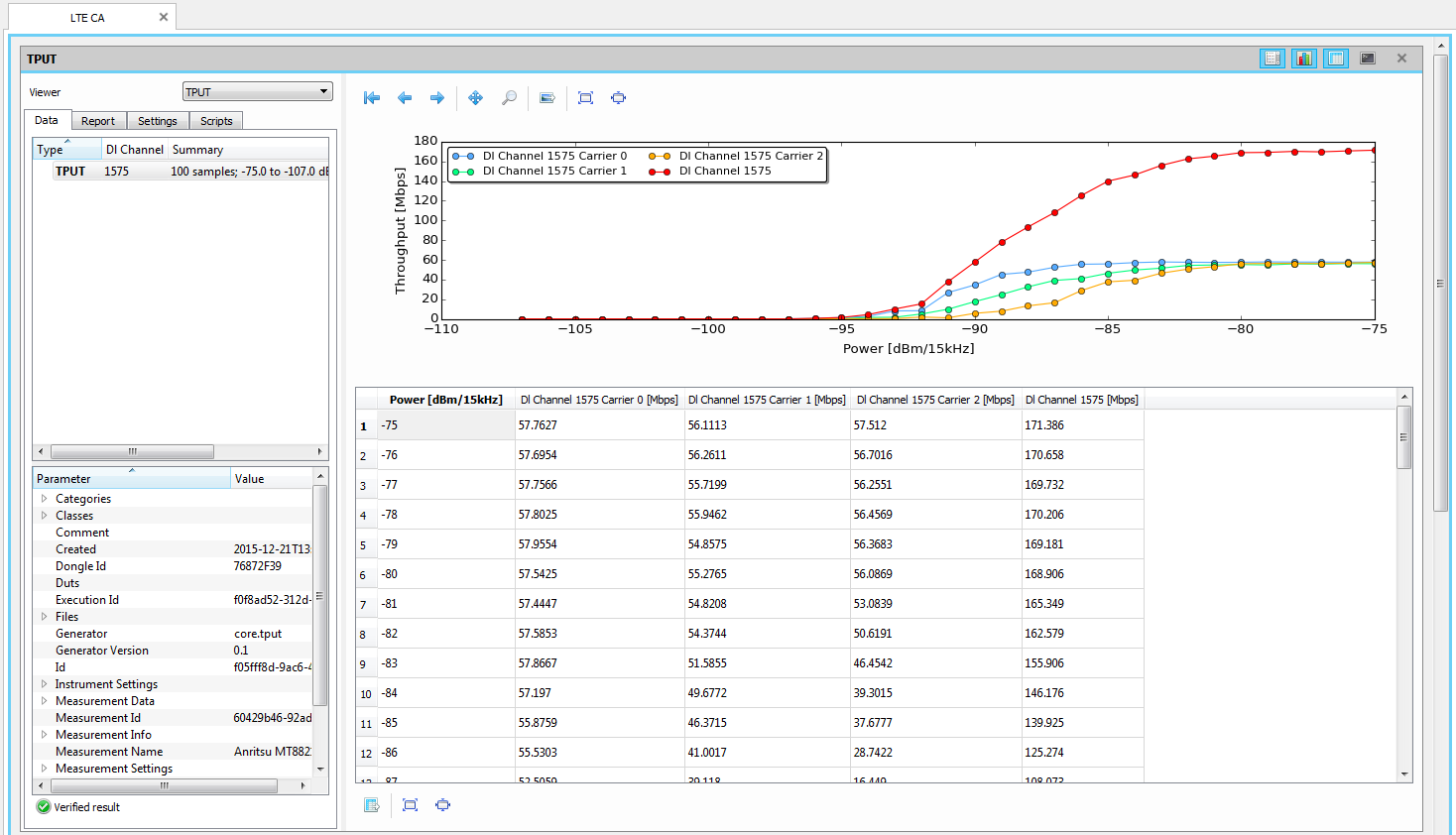LTE and LTE-Advanced with Carrier Aggregation
We are in the forefront of providing measurement solutions for the newest communication systems. We don’t let you wait for measurement solutions supporting technologies that is introduced now. A proof of that is our introduction of MIMO functionality already in 2009 and support for 2 component carrier aggregation (2CC) in 2013. Our system today supports all currently released configurations including up to six downlink or four 4x4 MIMO carriers (TDD, FDD or a mix) as well as two uplink carriers. You can measure the aggregated data throughput as well as throughput per carrier or receiver sensitivity and transmitter power per carrier.
It's all about the throughput
LTE-Advanced enables for higher efficiency in the operator network. By adding bandwidth operators increase their capacity. It allows for a higher number of active subscribers in the network at the same time.
In the continuous strive for higher data throughput and better network efficiency, LTE-Advanced introduced the possibility to use multiple LTE carriers simultaneously in one device – carrier aggregation (CA). A primary component carrier (PCC) is complemented with one or several secondary component carriers (SCC). The PCC handles all the control signaling while the SCC is used to increase the data throughput. The carriers can be FDD, TDD or a mix of FDD and TDD with location in one or multiple frequency bands.
Today we see configurations with up to six downlink or four 4x4 MIMO carriers and up to 2 uplink carriers being implemented.


Improved network efficiency
LTE CA allows for an aggregation of up to 5 carriers. Each carrier can have a bandwidth of 1.4, 3, 5, 10, 15 or 20 MHz, so it is possible to reach a 100 MHz bandwidth with carrier aggregation. One way to arrange aggregation is to use the adjacent component carriers within the same frequency band. This is called intra-band contiguous carrier aggregation. Some network operators might have limitations in frequency allocation, then non-contiguous aggregation is suitable to use. For intra-band non-contiguous aggregation the component carriers belongs to the same frequency band but are separated by a frequency gap. For inter-band aggregation, the component carriers are allocated to different frequency bands.
LTE and the RTS
The test system implementation is quite straight forward – we provide the measurement software Bluetest Flow and a reverberation chamber configured with up to 16 measurement ports. You connect it to a base station emulator with LTE CA capability using one coaxial cable per stream and then you’re all set. It’s easier than you think.
We expect to continue supporting the feature growth within LTE-Advanced in step with industry needs.
